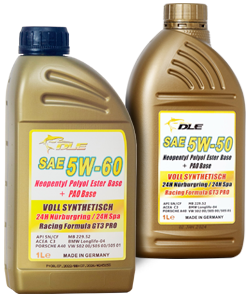NEWS
The polyol ester has been replaced by diester
Date  2012.08.20
2012.08.20
Diesters, or dibasic acid esters, were developed during World War II and are the reaction product of long-chain alcohols and carboxylic acids. Historically, they have been effective as reciprocating compressor lubricants due to their low coking tendency at temperatures of 400°F or higher. They also provide excellent solvency and detergency. The aggressiveness of diesters toward elastomers, seals and hoses has limited the usefulness of these fluids. Newer fluids, such as polyol esters, meet the needs of many applications formerly filled by diesters.
Polyol esters,or Neopentyl poly esters, have largely replaced diesters in high-temperature applications where oxidative stability is critical. Common applications include their use as lubricants in aircraft engines, high-temperature gas turbines, hydraulic fluids, and as heat exchange fluids. They can also be used as a co-blended basestock with PAOs to enhance additive solubility and reduce the tendency of PAOs to shrink and harden elastomers.
1-http://en.wikipedia.org/wiki/Motor_oil
American Petroleum Institute
The American Petroleum Institute(API) sets minimum for performance standards for lubricants. Motor oil is used for the lubrication, cooling, and cleaning of internal combustion engines. Motor oil may be composed of a lubricant base stock only in the case of non-detergentoil, or a lubricant base stock plus additives to improve the oil's detergency, extreme pressure performance, and ability to inhibitcorrosionof engine parts. Lubricant base stocks are categorized into five groups by the API. Group I- base stocks are composed of fractionally distilledpetroleumwhich is further refined with solvent extraction processes to improve certain properties such as oxidation resistance and to remove wax.Group II- base stocks are composed of fractionally distilledpetroleumthat has been hydrocrackedto further refine and purify it. Group III- base stocks have similar characteristics to Group II base stocks, except that Group III base stocks have higher viscosity indexes. Group III base stocks are produced by further hydrocracking of Group II base stocks, or of hydroisomerized slack wax, (a byproduct of the dewaxing process).Group IV- base stock are polyalphaolefins(PAOs). Group V is a catch-all group for any base stock not described by Groups I to IV. Examples of group V- base stocks include(polyolesters), polyalkylene glycols(PAG oils), and perfluoropolyalkylethers(PFPAEs). Groups I and II are commonly referred to as mineral oils, group III is typically referred to as synthetic (except in Germany and Japan, where they must not be called synthetic) and group IV is a synthetic oil. Group V base oils are so diverse that there is no catch-all description













